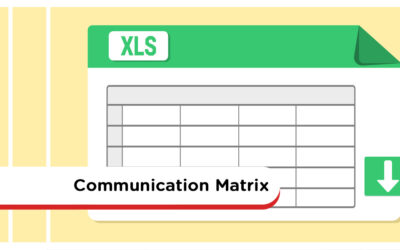Team Collaboration
How To Help Staff Connect, Encourage Ideas, And Move Work Forward
Share. Communicate. Innovate

Team collaboration is a prominent trait among today’s winning organizations. Done right, collaboration aids better decision-making, innovative thinking and improved productivity. Staff are happier, performance is boosted, and there’s less risk of error.
But many organizations have yet to figure out how to help colleagues work better together to achieve a common goal.
The good news is that there are tools and techniques that have proven to nurture a strong collaborative culture within the workplace.
Here, we shed light on the causes of poor collaboration, tips for improvement, and collaboration software that enables co-workers to share ideas and improve internal communications.
What Is Team Collaboration?

The definition of team collaboration is when two or more people work together to achieve a common goal. This is done through idea sharing, planning and executing in unison. In contrast to working on one’s own, team collaboration is regarded as a more productive way to get work done, and carries less risk.
Tackling a major project – such as a new product launch or the introduction of a new internal process – usually requires a teamwork approach. This entails bringing together a group of employees to allocate and complete tasks, within a set timeframe.
These days, with technology overcoming geographical barriers, virtual teams are popular. Companies are now appointing the best people for a project – regardless of their work location – to form part of a team and collaborate. This development has created new opportunities for businesses to innovate – but is not without its challenges.
Why Is Team Collaboration Critical In The 21st Century?

Never before has the workplace been so diverse. For the first time in history, five generations are working side-by-side. Each employee has a unique perspective. Their opinions are formed by their own personal experiences. And they have different communication styles – some prefer face-to-face, others the written word.
Such differences are a lot to manage, particularly when complex, project-based decisions must be made.
How a team interacts with each other will influence the final outcome. Communication, knowledge transfer and equal respect for each team member are essential for a high-performing team.
Younger generations joining the workforce are eager to further develop the collaborative skills they’ve learnt during education. They place place greater support on social tools for collaboration than their older colleagues (49 per cent millennials vs 31 per cent baby boomers). And considering that 46 per cent of 2020’s workforce are millennials (compared with 36 per cent six years ago), employers must act upon this growing generation’s preference for building team dynamics.
Furthermore, around 75% of employees now rate teamwork and collaboration as crucial to their performance.
Reasons For Poor Team Collaboration
It’s a common scenario when a collection of people come together to solve a problem, cross-functionally. There may be representatives in the room from IT, Sales, Product and Finance.
When collaboration fails, it’s often because these individuals partially listen to others points-of-view, but do not fully seek to understand what they were actually saying.
Each representative remains in their own paradigm rather than genuinely taking on board and seeking a solution based on other perspectives.
To counter this, effective collaboration requires recognition of diversity; that each individual has their own thought process and purpose. This requires greater understanding of the team individuals, and the concerns they may be feeling.
These could include the following:
- Skepticism about the success of the project i.e.‘doomed to fail’
- Uncertainty around who does what in the team, and where tasks and responsibilities sit
- Misinterpretation or miscommunication: wrongly assuming all staff have the same understanding
- Lack of direction, KPIs and milestones set out from the start
- Conflicting priorities: failing to appreciate an employee’s current workload before adding more
- Forcing staff to communicate in ways that may be uncomfortable for them i.e. introverted employees making team presentations
How To Improve Team Collaboration
Successful team collaboration is hard work. With so much to consider – silos, company culture, staff at different locations, leadership styles – good team collaboration doesn’t happen by accident.
Furthermore, Harvard Business Review has exposed an interesting paradox at play, based on its research into team behavior:
“Although teams that are large, virtual, diverse, and composed of highly educated specialists are increasingly crucial with challenging projects, those same four characteristics make it hard for teams to get anything done.
“To put it another way, the qualities required for success are the same qualities that undermine success. Members of complex teams are less likely to share knowledge freely, to learn from one another, to shift workloads flexibly to break up unexpected bottlenecks, to help one another complete jobs and meet deadlines, and to share resources.”
It also found that the higher the educational level of the team member, the more challenging collaboration appears for them.
But there are some best practices for building effective collaboration strategies, as follows:
Define And Repeatedly Communicate The Team’s Goals
This is the first step to bringing together a group of people. Goals should be reiterated at the start of daily huddles, referred to when key decisions are underway, and repeated across all communication channels (your intranet, for example).
Promote Open Communication Particularly When Faced With A Roadblock
This is where technology has become a game-changer. Instead of waiting for the next round-table meeting to overcome a roadblock, intranet tools such as forums, instant messaging, and shared files allow members of the same team to work through a problem collaboratively at pace.
Create Structure Within Meetings And Give Staff Time To Prepare
WIP (work-in-progress) meetings are an important part of effective project management. Ahead of each meeting, share agenda items, action lists and related reading material with all members of the team so there are no frustrating delays when teams meet.
Encourage Creativity And Free-thinking: All Ideas To Be Respected
Brainstorming sessions can be fun and fruitful. Team leaders must give advance warning though so staff can do their own research. And if you’re the manager, resist the urge to direct and jump in immediately with your ideas, as staff may feel obliged to follow.
Log Important Decisions And Their Backstory
Avoid the “he said/she said” nature of spontaneous conversations; make sure ideas are contextually documented in a central space, accessible for all, and not lost in the moment.
Invest in Collaboration Tools
Team collaboration tools have shown the way here. Employees can set up team channels where decisions can be made in real-time. Slack, the popular chat tool, has been joined by a host of other instant messaging tools, virtually eliminating the need for traditional email. Video conferencing, in the wake of Covid-19, has become the default meeting format. And forums are another effective channel for effective team collaboration.
Check For Understanding
Nodding heads does not necessarily mean agreement and understanding. Many co-workers won’t like to admit they don’t understand something. Reiterate major decisions – during and after meetings – providing clarity and an opportunity for others to ask further questions. Engage in two-way communication with all members when possible.
Create Ways For Less Outspoken Team Members To Contribute Ideas
Not everyone has public speaking skills. Shy people will not feel comfortable sharing their idea in a room full of colleagues, but may happily submit an idea via a forum or chat channel. Make it known that individual thinking is unique and valued, and that every team member should be able to communicate with equality and authority.
Share Experience, Knowledge And Resources
Use an intranet to capture treasured insights – physically and virtually with file-sharing software. This will save mistakes being repeated, and knowledge walking out the door when someone leaves. Don’t leave this to chance: embed a process for eliciting and storing this valuable intelligence as part of your regular WIP meetings. Add tags to meeting notes that can be searched for later on.
Acknowledge And Celebrate Individual And Team Success
Highlight individual qualities and the special skills that each team member brings to the table. Go big when a milestone or key task has been ticked off with a team building celebration event. This boosts morale and makes people feel valued.
Appoint Task And Relationship-Oriented Leaders
HBR research found that the most productive and innovative teams had leaders who could outline clear goals and responsibilities and easily switch to relationship-building mode i.e. smoothing out internal tensions.
Limit Group Sizes
Not always possible – particularly if you’re about to organize the next Olympics – but aim to keep teams small enough so that staff get to know (and respect) each other, and ideas exchange freely. Big teams tend to be more vulnerable to tunnel vision, or the ‘squeakiest wheel wins’.
❝
Collaborative teams are 5 x higher performing as they feel motivated towards a common goal
Source: i4cp
Team Collaboration Trends
Team Collaboration tools are evolving to suit the changing needs of businesses today.
Flexibility, scalability, and compatibility with existing systems increasingly matter. Because of this, enterprise players such as Cisco, Slack and Microsoft have no choice but to integrate with each other.
Some other noticeable trends in team collaboration include:
Artificial Intelligence
Machine learning tools and bots can help an entire team improve the way they collaborate by making it easier to find information instantly. They can also offer things like real-time translation and transcribing during video conferencing meetings.
Unique Experiences
As more technology vendors come to the integration and interoperability party, open-source platforms with the help of APIs are enabling employers to build their own collaboration experience, just right for their internal culture.
Love Of Video
This format’s popularity continues to rise, but so do expectations around its performance. With remote teams the new normal, businesses are relying more on video conferencing, which must be reliable, secure and consistent.
Team Collaboration Software
Creating a workplace using team collaboration software is a practical move that can really transform how you and your colleagues collaborate.
MyHub’s cloud-based intranet is designed specifically for organizations in search of an affordable and adaptable collaboration solution. It’s fully scalable, designed to support your company’s growth. And fully customizable, to meet your exact needs.
Combining a company internal newsfeed, instant messaging and secure cloud storage, MyHub is the perfect choice for your important projects-in-progress.

Whether you’re an IT pro or completely non-technical, MyHub’s cloud-hosted solution offers all the features and functionality you’ll ever need.
We’ve made it so that it’s super simple to set-up (no coding skills or IT experience required) – and is enjoyable to use!
Using simple drag-and-drop functionality, you can create a professional space for your team to start collaborating in minutes! Being cloud-hosted also means you’re future-proofing your investment: you get to benefit from our latest new features and enhancements as soon as they’re released.
Useful Team Collaboration Resources
Team Celebration: The How, What, And Why
Celebrating team successes shouldn’t be reserved only for major milestones like big deals or record-breaking figures. According to the article, recognizing even small wins—such as completing a project or positive customer feedback—can have a powerful ripple effect by enhancing employee retention, productivity, and overall morale. Organizations are encouraged to make recognition a consistent part of their culture to reinforce positive behaviors and foster pride.
The guide outlines when to celebrate—such as first wins, project completions, role changes, or employee anniversaries—and how to do it creatively across different work environments. It offers practical ideas: in-person team outings, award ceremonies, meeting shout-outs, virtual lunches, care packages, and digital timelines. This ensures celebrations are relevant whether your team is in-office, remote, or hybrid
The post also addresses the importance of balancing public and private recognition. While team-wide shout-outs build unity, personal acknowledgments—like handwritten notes or one-on-one feedback—resonate deeply. Finally, it warns against misuse: avoid over-celebration, ensure equity, consider sensitivity (e.g., budget cuts), and follow up beyond one-off events . Together, these practices build a positive, inclusive celebration culture that benefits both people and the organization.
Internal Website: Uses, Features And Setup
A modern internal website—also known as an intranet—is a secure, employee-only platform that centralizes everything staff need: company news, documents, tools, and applications. Unlike external sites, intranets often suffer from outdated content and poor navigation, yet play a pivotal role in internal communications, information sharing, and teamwork
This guide outlines how intranets enhance information management, featuring integrated search, cloud document libraries, and a central hub to streamline access and eliminate inefficient shared drives. It also improves internal communication via interactive news feeds, blogs, and surveys—especially crucial for hybrid or remote workforces . Beyond communication, intranets support collaboration and automated workflows, enabling real-time document co-editing, team forums, and form-based process automation for tasks like leave requests, approvals, and reporting .
To roll out an effective internal website, the blog recommends evaluating three build options—DIY, off-the-shelf tools, or cloud-based intranet software. It emphasizes essential features: intuitive setup, mobile responsiveness, high usability, cost effectiveness, and ready-to-go deployment. Templated cloud intranets stand out for quick deployment, mobile optimization, single sign-on, and user familiarity
Communication Matrix: A Step By Step Guide With Free Template
A communication matrix is a strategic tool designed to organize and streamline internal communications across projects, teams, and the whole organization by mapping content, audience, frequency, channel, and ownership into a clear, one-page framework. Especially valuable for hybrid and remote environments, it helps teams decide what to communicate, when, to whom, and through which medium—making sure nobody is left out or overwhelmed .
The guide dives into the essential components—content, purpose, frequency, audience, deliverables, channels, and owners—and explains how these elements work together to make communication purposeful and consistent. It emphasizes using a simple tool like Excel or Google Sheets for easy setup and live collaboration.
The article also outlines key benefits: faster decision-making, higher transparency, optimized resource use, better collaboration, and adaptability to change. With included real-world examples—a monthly newsletter and project-team matrix—and a free download link, it shows how quick and impactful implementing this tool can be.
55 Questions To Ask A CEO
High engagement levels across organizations have made CEOs more accessible than ever—appearing in town halls, online Q&As, and casual hallway chats. This increased visibility means employees now have rare face-to-face time with top leadership. To make the most of such moments, the blog emphasizes the importance of preparation: thoughtful, well-targeted questions help you stand out, build rapport, and even elevate your career.
The post categorizes 55 insightful questions into key themes: corporate culture, company goals, operations, CEO career path, personal interests, and ways to make the right impression. From probing culture with “What three words best describe our company?” to gaining personal insight via “What motivates you when things get tough?”, each question is framed for specific formats—town halls, small group settings, or one-on-one conversations.
To round it out, the article offers top tips to guide your approach: be prepared with a few select questions, match the tone to the forum, offer your own thoughts when it’s intimate, and above all, remain genuinely enthusiastic. Done right, this isn’t just a chat—it’s an opportunity to connect, learn, and make a positive, lasting impression.
Collaborative Communication: Why It Matters
In today’s dynamic business environment, traditional hierarchical structures are giving way to more collaborative and flexible models. With the rise of remote work and diverse teams, effective communication has become the cornerstone of successful collaboration. By uniting individuals across various departments and locations, organizations can harness a wealth of ideas and perspectives, leading to innovative solutions and enhanced problem-solving capabilities.
Central to this collaborative effort is the role of communication. It’s not just about sharing information but about fostering an environment of openness, trust, and mutual respect. Providing diverse communication channels—such as instant messaging, video conferencing, and collaborative platforms—ensures that all team members are aligned and engaged, regardless of their physical location. This approach not only facilitates seamless information flow but also strengthens team cohesion and morale.
Moreover, investing in robust communication strategies has tangible business benefits. Organizations that prioritize collaborative communication experience increased productivity, faster decision-making, and a more agile response to market changes. As businesses continue to adapt to evolving work dynamics, embracing collaborative communication is essential for sustained growth and competitive advantage.
How To Build Trust In A Team: 10 Proven Strategies That Work
Building trust within teams isn’t a one-time event—it’s a continuous process rooted in consistent behaviors. The blog outlines ten proven strategies to cultivate trust: clear communication, giving autonomy, celebrating successes, and more. These insights draw on best practices that create an environment where team members feel safe to take risks and contribute authentically.
Key strategies include fostering transparency by sharing both successes and challenges openly, and embracing accountability by ensuring commitments are honored. Leaders play a pivotal role by modeling reliability and integrity—walking the talk—and by establishing clear processes that remove ambiguity and reduce micromanagement
The post also emphasizes the importance of social connection and shared experiences. Whether through informal gatherings or team-building exercises, these moments build rapport and reinforce mutual support. Recognizing individual and collective achievements further cements bonds, elevating team morale and performance .






